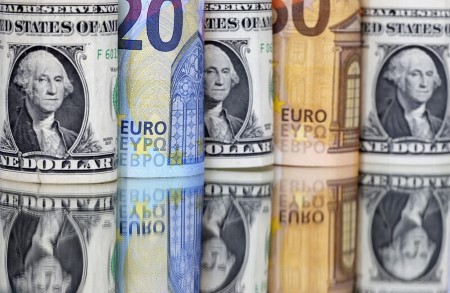




Philippines Trade Update: Trade trajectories trend along
 DOWNLOAD
DOWNLOAD

Policy Rate Updates: Double cut finale
 DOWNLOAD
DOWNLOAD

Monthly Economic Update: One for the road
 DOWNLOAD
DOWNLOAD


US recap: ISM, Fed outlook drive EUR/USD to lowest since late-2002

Sept 6 (Reuters) – The dollar index gained 0.6%, led by a 1.7% surge in USD/JPY to new 24-year highs and helped by solid U.S. ISM services data in the wake last week’s strong jobs data, which argue for continued Fed hikes.
The unexpectedly strong ISM contrasted with worse-than-expected July German industrial orders, producing session highs for the dollar on the coattails of Treasury yields and the dollar to session highs.
Similar to Friday’s non-farm payrolls report, the ISM data suggested slightly less supply-side tightness, allowing dollar consolidation to set in.
EUR/USD was down 0.22% after recovering slightly from its low of 0.9864 on EBS, near December 2002’s lows at 0.9860 nL1N30D19C and still shaking off an MNI report suggesting that a 50bp hike by the ECB remained on the table at Thursday’s meeting even though the market expects 75bp.
Markets expect the Fed to hike on Sept. 21 by 75bp for a third meeting, lifting rates up to 3.25%, while a three-quarter-point ECB hike would merely increase its rate to 0.75%, even as euro zone inflation has overtaken U.S. price growth and Europe faces much greater energy insecurity.
Dutch natgas prices and Brent crude fell sharply after a short-lived surge higher on confirmation Russia stopped all Nord Stream 1 pipeline flows on Friday, and as western nations attempt to build price caps on Russia oil.
USD/JPY surged 1.65% from 140.25 to 143.085 on EBS, extending a run driven by accommodative BOJ policy and Japan’s dependence on energy imports at a time of soaring prices.
There’s scant Japanese core inflation or wage pressure, so rising Treasury yields widen the gap over JGB yields out to the 10-year tenor, which the BOJ’s yield curve control policy caps at 25bp.
USD/JPY’s rally to new 24-year highs has it near the next technical targets at 143.97 nL1N30D1DD, and it could eventually reach 1998’s 147.63 peak and nearby technical targets.
Sterling swung from early gains on hope the new UK PM will usher in major fiscal support to blunt the trauma of stratospheric energy prices, with the BoE obliged to hike rates even harder, to losses down to 1.1492 after the potential cost of energy cushioning and decent U.S data were factored in nL1N30D15J.
The RBA’s hawkish 50bp rate hike Tuesday nL1N30D087 failed to stop AUD/USD’s 1% fall.
And China’s 2% RRR cut couldn’t keep USD/CNH from rising 0.3% to new 2-year highs.
Wednesday features U.S. trade data, the Fed’s beige book and Fed speakers, while Chair Jerome Powell is scheduled to speak on Thursday, after the ECB meeting.
(Editing by Burton Frierson Randolph Donney is a Reuters market analyst. The views expressed are his own.)
This article originally appeared on reuters.com





 By Reuters
By Reuters